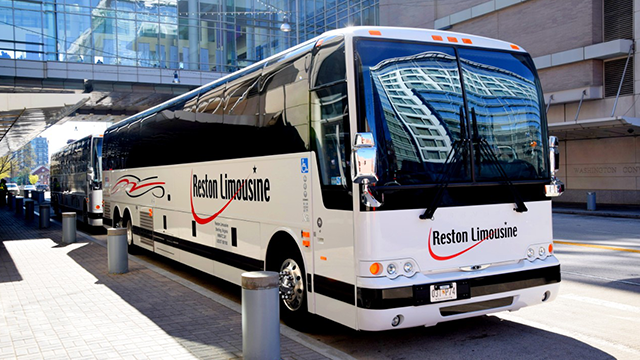20 Recommended Suggestions For Deciding On Employee Shuttle Websites
20 Recommended Suggestions For Deciding On Employee Shuttle Websites
Blog Article
Shuttle Service For Employees 10 Tips For Planning And Covering The Route
Here are 10 top ideas for route planning and coverage for shuttle services for employees:
1. Understand Employee Needs
Conduct focus groups or surveys in order to better understand the locations of employees as well as their preferred shuttle schedules as well as any particular needs (such as accessibility). This information is essential to design routes that will maximize participation and satisfaction.
2. Analyse traffic patterns
Patterns of traffic flow and peak hours around your organization must be analyzed. Utilize tools such as Google Maps traffic data to identify congested routes and stay clear of them during shuttle hours. It will ensure that the ride is smooth and reduces the chance of delays.
3. Utilize Technology
Use software to plan routes which optimizes routes based on the most current information about traffic and employee schedules. Shuttle apps can be utilized to modify routes in real-time and ensure that your service is most efficient.
4. Establish Strategic Pickup Points
Find central locations where people can quickly access them. To increase coverage, look at places close to major intersections, public transportation hubs, and residential areas.
5. Create a flexible schedule
Create a schedule for shuttles which takes into consideration the different work hours of employees. The availability of shuttles during peak hours as well as off-peak times could benefit shifts with different hours.
6. Set up a feedback loop
Encourage your employees to provide feedback about shuttle services. Make use of this feedback to modify schedules, routes, or pickup points. By regularly assessing the satisfaction of employees, you can ensure that your service is which is customized to their preferences.
7. Analyze and monitor data usage
Keep track of the routes of shuttles to determine the ones that are most popular. By analyzing this data you will be able to make better decisions regarding how to distribute resources or improve service.
8. Encourage carpooling and Ridesharing
Encourage employees to take advantage of the carpooling option along with the shuttle service. This will decrease the need for shuttles, and give you more flexibility. Ridesharing apps are a great way to reduce costs.
9. Consider Environmental Impact
Create routes that reduce carbon emissions by using energy-efficient shuttles. Encourage the use of hybrid or electric vehicles as part of the shuttle service. This is a fantastic method to encourage sustainability and also attract employees who care about the environment.
10. Make sure you are safe and Compliance
Check that the shuttles meet the safety and legal requirements. This includes periodic maintenance checks for vehicles, assuring that drivers are properly trained and certified, and providing insurance coverage. The safety of passengers should always be taken into account when planning travel.
By incorporating these strategies to your workplace, you can develop an efficient employee shuttle transportation system to meet the needs of your employees while ensuring safety and optimal resource use. Read the top rated employee transportation recommendations for blog tips including transportation to airport, airport pick up service, luxury transportation, nyc transporter, los angeles airport shuttle bus, shuttle to airport near me, bus shuttle service, miami airport transportation, miami transportation services, rides to lax and more.
Top 10 Tips For Budgeting And Estimate The Cost Of A Company's Transportation Service
Here are 10 top suggestions on budget and cost for transportation services for corporate events:
1. Conduct an Cost Analysis
Do a thorough cost analysis for all aspects. This includes leasing or rental costs, fuel costs as well as driver's wages, insurance, maintenance, and any other fees related to permits or parking. Knowing the total cost helps you create a realistic budget.
2. Create a clear budget framework
Set a clear budget framework that outlines how much the organization is willing to invest in transportation. This framework should take into consideration the total cost of transportation and allow for flexibility to deal with any unexpected expenses. Budgeting can aid in making decisions, and also ensures that transportation costs can be managed.
3. Consider Different Transportation Options
Assess the transportation options, such as shuttles and vans. Examine the cost associated with each option, considering factors like capacity, comfort, and convenience. The most affordable option to meet the needs of the attendees will optimize the budget.
4. How to Negotiate with transportation providers
You can negotiate rates with the transport company you select. Many businesses offer discounts when you book in bulk or for corporate events. Building a relationship with your service providers can result in lower prices and better service. This can ultimately be beneficial for your budget.
5. Plan for the Price of Fuel
Include fuel costs in your budget since they could impact transportation costs significantly. Calculate the number of trips and the distance required to reach the venue. Make sure you negotiate fuel-efficient car options with the transportation provider to cut expenses.
6. Include Contingency Funds
Set aside a portion of your budget for emergency funds to cover unexpected expenses. Transport costs can be unpredictably. Breakdowns in vehicles and extra travel may happen. With contingency funds, you will be able to deal with these issues without sacrificing service quality.
7. Consider Discounts for groups and packages
It is possible to save money by looking for specials or discounts that transport companies offer. Many companies offer special rates for large or corporate groups. Discounts can result in big savings. Ask about packages that offer additional services for a discounted price like additional vehicles or on-site coordination.
8. Monitor and Track Expenses
Maintain a close watch on all transportation-related expenses throughout the planning and execution phases. Utilize spreadsheets or budgeting software to track your costs in real-time. Monitoring expenses can help identify areas to cut and keep the budget on track.
9. Gather feedback for future budgeting
After the event, gather feedback from attendees about their experience with transportation, including any costs associated with it. This information will provide valuable insights into how effective the transport service is and can inform your future budgeting decisions. Knowing what went well and what did not will help you refine your budget for future events.
10. Determine the total cost of ownership
If you are considering options for transportation take into consideration the total cost of ownership (TCO) for vehicles. It is not just the initial purchase or rental cost, but also all ongoing expenses including maintenance, insurance, and depreciation. Understanding TCO will help you make well-informed decisions to make sure you are balancing the initial cost against long-term financial implications.
If you follow these guidelines companies can efficiently manage costs and make informed budget decisions for corporate event transportation services. A properly planned budget ensures that the transportation needs are met and helps ensure overall successful. The attendees can concentrate on their experience rather than worrying about logistics. Budgeting and cost control improve the image of an organization and demonstrate commitment to efficiency and responsibility. Read the top rated go to the website on event transportation service for more tips including transportation specialists, transport systems, luxus transportation, transport manager job, transporters near me, coach transportation, global logistics, specialized transportation inc, transportation companies, vehicle transport service and more.